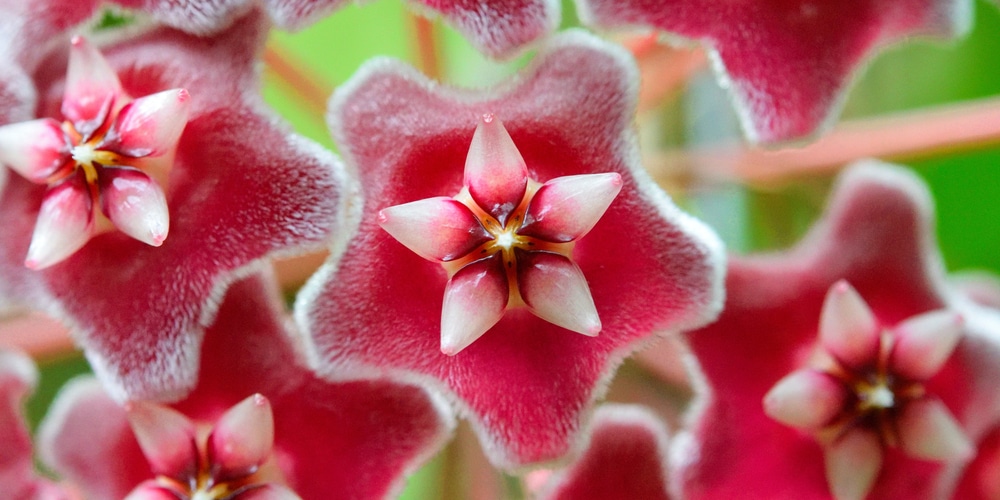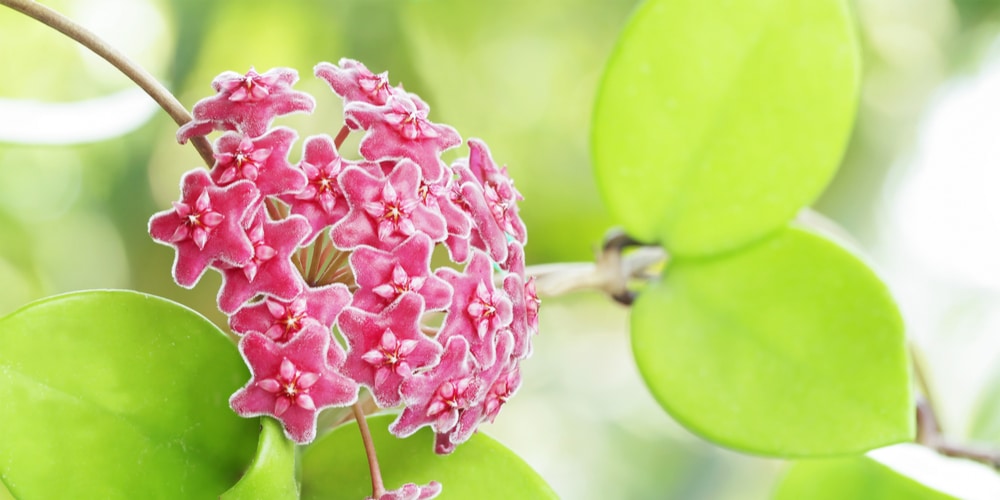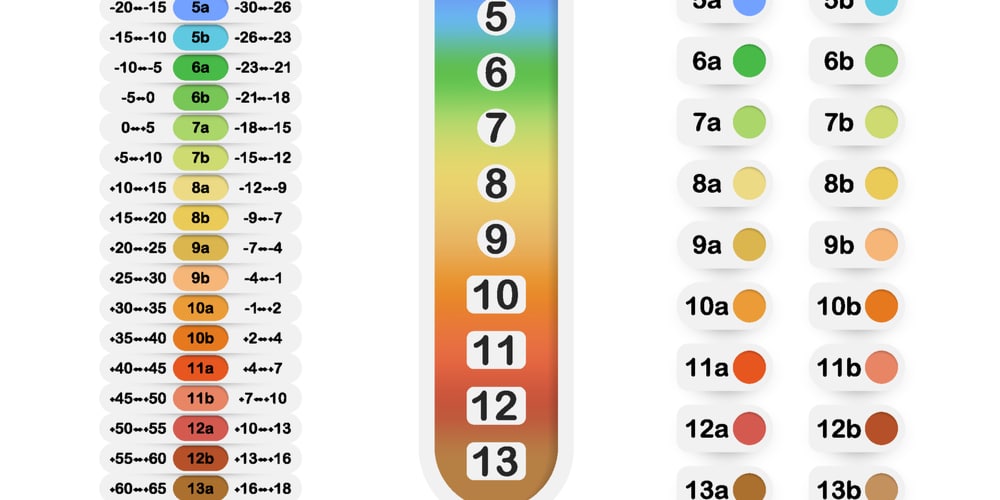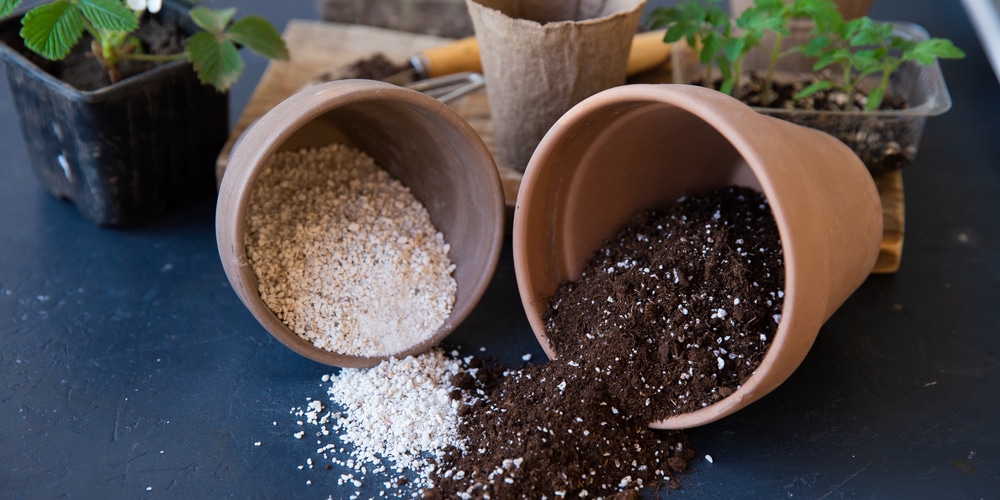The Hoya Parasitica is a favorite with plant-lovers, owing to its fragrant blossoms and relatively easy maintenance requirements. It is to be found in countless homes across the United States, even though it is native to Southeast Asia. Also known as the Hoya Parasitica Green, it is one among many Hoyas and is distinguished by its parachute-shaped clusters. These flower in formations known as umbels, which can comprise up to 40 flowers apiece, with numerous umbels growing forth from each stem.
Note that there are different varieties of Hoya Parasitica out there, including the Lao, Splash, Pink, Heart Splash, Variegata, Var Citrina, Chantelle, and so on. The most common variety or cultivar, however, is the Hoya Parasitica Black Margin. In this piece, we’ll be taking a closer look at the Hoya Parasitica family of plants, detailing all you need to know about their needs and requirements so that you can care for them and ensure that they prosper.
Let’s dive right in.
Sunlight Requirements
The Hoya Parasitica loves light. While it can do well in a variety of lighting conditions, you will want to provide it with bright, albeit indirect, light. Light will encourage faster growth and a greater proliferation of flowers, which every gardener loves. Provide it with dappled, filtered, or otherwise diffused light conditions.
As a native of Southeast Asia, this type of plant is accustomed to living underneath the canopies of large forest trees, which is why it fares better with indirect sunlight. There’s such a thing as too much sun for this plant, as prolonged exposure to direct, unfiltered sunlight might lead to the discoloration or even scorching of its leaves.; You don’t want that. Should this occur, the leaves will not recover their vitality and end up needing pruning.
Watering Needs
You’ll need to be careful with your watering regimen for the Hoya Parasitica. As an epiphyte, it prefers to have its roots breathe, which means that it shouldn’t be allowed to rest in standing water for extended periods; otherwise, you will risk exposing it to root rot.
The upside of this is that it doesn’t require large quantities of water to thrive. Its semi-succulent, waxy leaves go a long way in helping it conserve and retain water to see it through dry stretches.
In short, a good watering schedule here will be at least once a week in the warmer months of the year and once after every two weeks throughout the winter season. The main idea is to avoid over-watering it, and a good way to gauge this is to check that the top 2 inches are dry before adding any water to its soil.
Pruning
The Hoya Parasitica is a perennial plant, meaning that you shouldn’t prune its peduncles even after the blooming flowers have faded. New flowers will grow from these old peduncles, meaning that cutting these off will deprive you of new blooms or make you have to wait for new ones to regrow.
The plant is a gratifyingly fast grower, meaning that its leaves might need pruning from time to time, although this might be mitigated by having it in a hanging position that allows it to grow and spread out its vining stems. It will all depend on your preferences and setup, but the general idea is to only prune its leaves when it starts to give you trouble.
Humidity Requirements
The climate of Southeast Asia tends to be very humid and warm. As this plant originates there, it prefers conditions approaching this. Even so, it’s equipped with thick, waxy leaves that make it capable of faring well at lower humidity, such as are common in many areas of the USA.
Ideally, the Hoya Parasitica will fare best at humidity ranging between 50% and 80%, but where this isn’t possible, it can do reasonably well at humidity from 40% upwards. A good idea for those of you living in areas with exceptionally low humidity is to fit your home with a humidifier or digital hygrometer that will keep track of humidity levels, letting you know when to mist the plant.
Ideal USDA Climate Zones
While the Hoya Parasitica is a relatively hardy plant, capable of surviving and thriving in a variety of conditions, it is exceptionally sensitive to cold weather. As a result, growers should try and ensure that it doesn’t face exposure to temperatures falling below 50 degrees.
This means that the most suitable USDA zones for the Hoya Parasitica are USDA Zones 10 and 11. Within these zones, temperatures are relatively mild or moderate, keeping well above the 50 degrees threshold. In case you live in regions where temperatures fall towards 50 degrees, be sure to bring your plant indoors where it’s warmer.
Fertilizer Needs
The most suitable fertilizer for this plant is the N-P-K liquid formulation of 15:15:15, diluted to half strength with water before application. The plant is not heavily reliant on fertilizer, so this should be enough for it, administered at least once a month.
Soil Type Requirements
Potting soil for the Hoya Parasitica should neither be too heavy/dense nor too light. A mixture that allows water to drain well while retaining enough moisture for the plant’s needs is ideal. A good mix might consist of one part orchid mix, one part cactus mix, and one part perlite. Any mix approximating this should be just fine for your plant.
Propagation Procedure
Stem propagation is the most efficient method of propagating the Hoya Parasitica plant. Stem cutting is much easier to do than air layering or using seeds. A simple way to go about this is to cut off a healthy 4–6-inch stem holding at least four leaves. Place this cutting in water or well-watered soil in a well-lit area. You can expect to see roots developing within 4 to 6 weeks. You can then re-pot or transplant your new plant.
Final Thoughts
The Hoya Parasitica is a favorite plant for many reasons, including its hardiness, aesthetic appeal, and easy handling. Even so, owners should be careful about keeping it within amenable temperature ranges and ensuring it is in well-drained soil to avoid root rot or pests such as fungus gnats. All in all, best of luck with your plant. I hope it brings you much joy!



